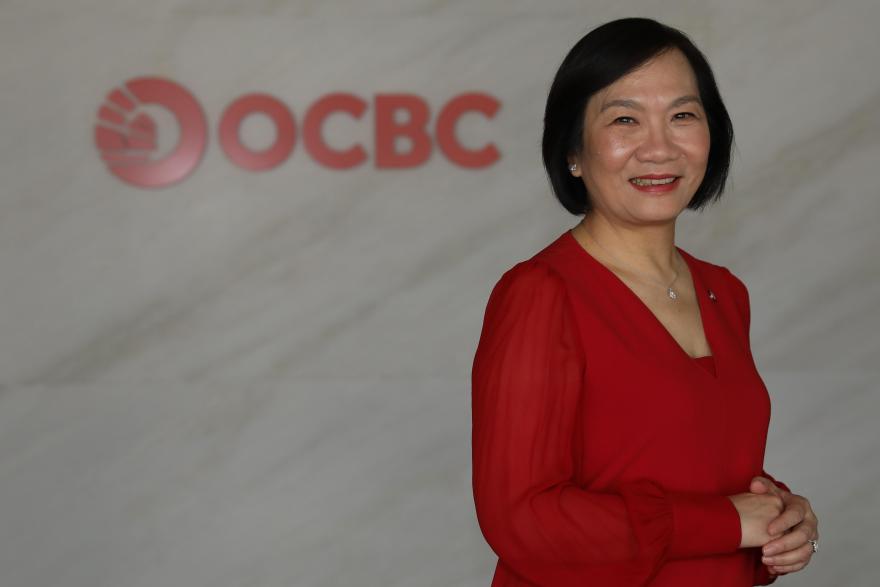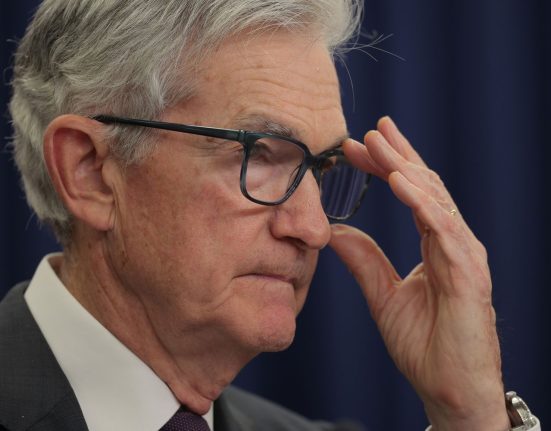[SINGAPORE] Being a basketball player in her youth imbued Helen Wong with a strong belief in the power of teamwork, something she has carried over to her role as chief executive of OCBC.
Wong said the combination of people with the right capabilities and the same ambition can bring about maximum value.
Hence, when she led OCBC’s corporate strategy refresh in 2022, the Hong Kong-born banker put forward a plan to leverage OCBC’s strength across Asean and Greater China – through a “one group” approach.
That is, to provide an integrated customer experience across the financial group’s business through collaboration across each of its functions.
“When people can work together, your client trusts you even more, because everything they do with us becomes smoother,” Wong said in an interview with The Business Times.
Wong became the first woman to head one of the Big Three Singapore banks, when she was appointed OCBC’s group CEO in April 2021.
This marks her second stint at OCBC – she first joined as a management trainee in 1984.
A former HSBC veteran who spent most of her career in Hong Kong, her previous role as CEO for Greater China at HSBC largely involved linking China and Hong Kong to the rest of the world, Wong said.
Then came OCBC, which was founded in 1932 and has long been present in both the Asean and Greater China regions, especially the two financial centres of Singapore and Hong Kong.
Wong said she always saw opportunities to connect the two regions, given the backdrop that intra-Asian flows have been dominant since 2015.
Asean has become a “much more important” trading partner for China, since the US-China trade conflict started almost 10 years ago.
At OCBC, Wong’s strategy focuses on trade, investment flows and wealth growth in Asia. Wealth, she said, was an especially important driver, given the rising affluence in the region.
The focus has paid off.
Since the launch of the corporate strategy refresh, OCBC has seen record earnings each year. Net profit was a record S$5.7 billion in 2022; it reached a new high of S$7 billion in 2023; and the record was beaten once again in 2024 at S$7.6 billion.
And the “one group” approach has led the bank to grow at a faster compound annual growth rate (CAGR) than its peers, she said.
Another contributor is the influx of Chinese companies expanding to Asean as they build their supply chains and expand into domestic markets.
While Wong acknowledged that OCBC benefited from higher interest rates in recent years, she said it was crucial to invest in the bank’s capabilities to build an operation that can function regardless of the rate environment.
“It is not just the presence; it’s whether you have the ability to link it up,” Wong said.
Linking people is always the most challenging, as most people are familiar with their own domestic markets and are comfortable operating in them.
“But we are allowing our people to understand more – that you can have a bigger conversation with your customers, you can help them, and you can speak in one language,” she said.
“And today, after a couple of years of effort, I can see that people truly feel that we are together as one group – and this is both the frontline and the support units.”
Growth across the bank
Wong was named Outstanding Chief Executive of the Year at the Singapore Business Awards on Thursday (May 22).
Under her leadership, OCBC made significant progress in various areas, including its Asean and Greater China links, sustainability targets, talent development and technology investments.
But this was not without effort. The bank had to relook at its organisational structure, and implemented the metric, “collaboration dollars” – a measure of the level of cooperation among staff.
It relaunched its brand, putting all its operations across Singapore, Indonesia, Hong Kong and China under the single “OCBC” brand.
For staff, it created messaging about the bank’s purpose, values and ambition, and trained them to collaborate.
“We built a very clear responsibility grid, which means that for a relationship manager: if you are able to create value in other countries, even not in your local book, you are recognised,” she said.
This led to the use of artificial intelligence and technology, and resulted in significant process improvement.
By 2024, as much as 15 per cent of its total income was attributable to collaboration dollars.
Meanwhile, Wong noted five focus areas to achieve its sustainability goals: building capabilities for customers; training staff; targeting net zero for internal operations; disclosure policies; and coming up with innovative solutions.
“We have a task force for all five areas, and after one or two years, it becomes business as usual,” she said, noting that sustainable finance made up 16 per cent of its total book as at the end of 2024.
“Setting the tone is also for the whole top team to walk the talk. Because we believe in it, we support it, then everybody is aligned,” she added.
Future targets
The year 2025 marks the end date for OCBC’s three-year goal to earn S$3 billion in additional revenue from its Asean-Greater China strategy. While Wong does not have exact targets beyond this, the plan does not stop there.
“We have a corporate strategy of eight pillars; whatever we have done will set the stage for this money to continue to come in,” she said.
Beyond 2025, Wong said, “the opportunities are still indeed in this part of the world”.
Chinese companies continue to come to Asean. But the new wave is also not so much in low-cost manufacturing – as these bases have already been established – but more so in targeting the fast-growing economies of this region.
Wong is also eyeing the “banking wallet” – which is the estimated revenue for banks across Asean and Greater China.
From 2023 to 2030, she expects the banking wallet in Asean to grow at a CAGR of 5 to 7 per cent, to reach S$500 billion to S$600 billion.
“A lot is about looking into the future and building a strategy to make sure we have the investments to pull people together,” she said. “It’s not a slogan; it is not just something that people say.”








